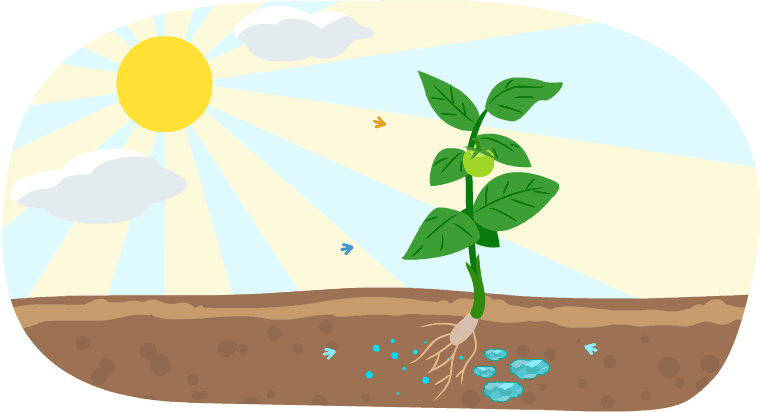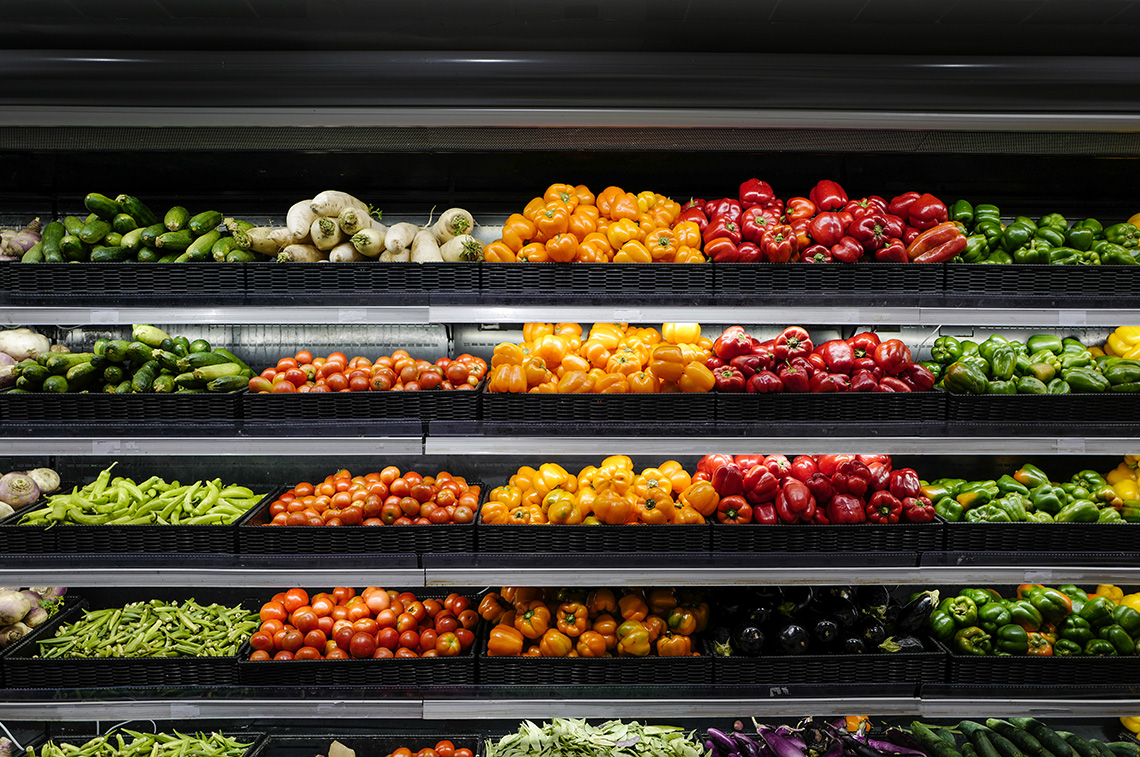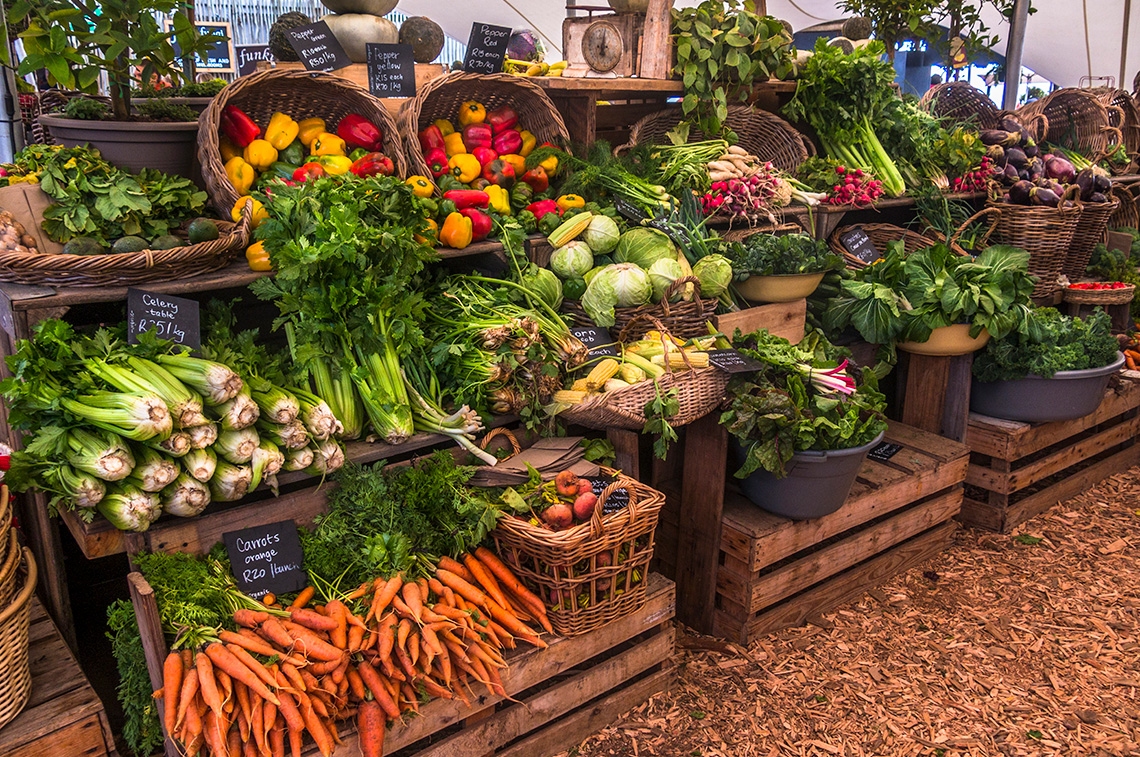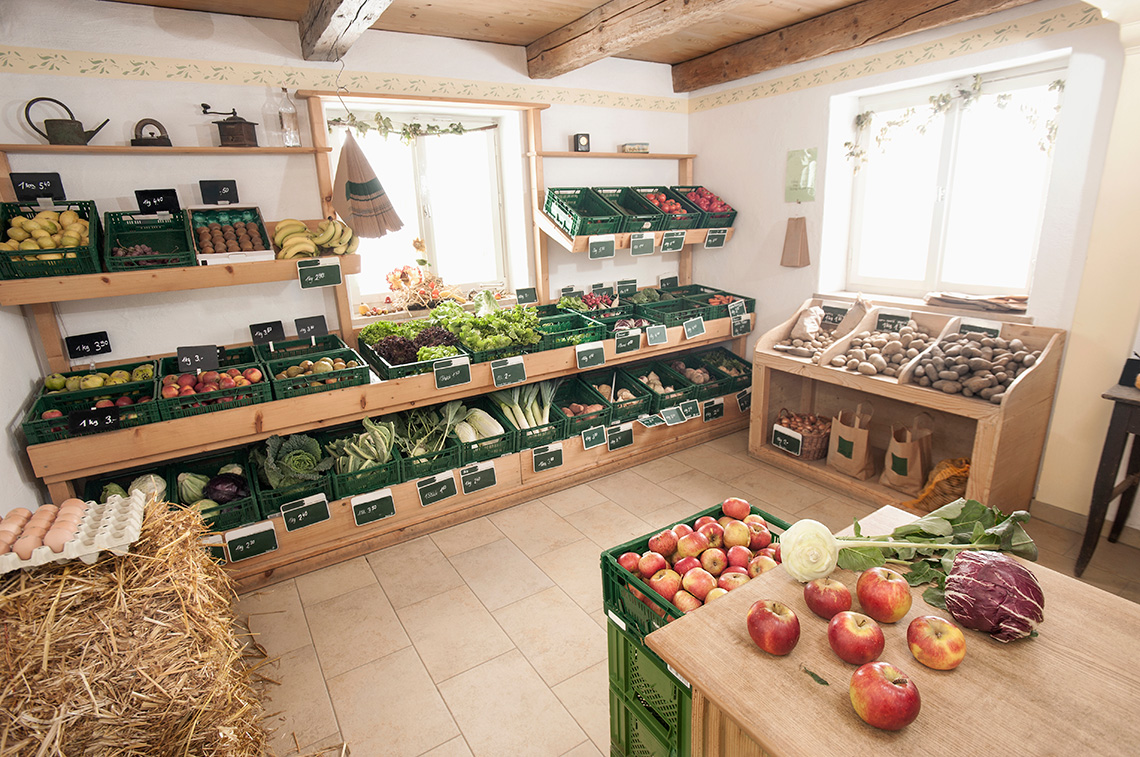Minds On
Where does it come from?
Have you ever wondered where certain foods come from?
For example, where are whole fruits and vegetable grown before they end up on supermarket shelves, in a market or displayed in a small local store?
Record your responses using a method of your choice.
Action
Food literacy

In this section, you will explore different parts of food literacy. For each topic, record your notes. Once you have completed this section, review your notes and reflect on your learning.
Complete the Food Literacy Organizer in your notebook or using the following fillable and printable document. If you would like, you can use speech-to-text or audio recording tools to record your thoughts.
| Topic | Information |
|---|---|
| Natural foods | |
| Processed foods | |
| Ultra-processed foods | |
| Urban farming | |
| Local farming | |
| Large-scale farming | |
| Technology in farming | |
| Vertical farming | |
| Drones in agriculture | |
| Soil and water sensors | |
| GPS technology | |
Complete Food Literacy Organizer in your notebook or using the following fillable and printable document.
Press the ‘Activity’ button to access the Food Literacy Organizer.
What is food literacy?
Food literacy is about our ability to make decisions about food. It can include understanding:
- the similarities and differences between types of food
- how our food choices impact ourselves and others
- how our food choices impact the environment
Types of food
Let’s consider types of food that someone might find in their daily life.
In order to make healthy choices, it is important to learn about each type.
First, there are natural or unprocessed food support good health. Natural foods do not have any ingredients added such as fat, sugar or salt. Some examples of natural foods include fruit, vegetables, eggs, meat etc.
Can you think of a specific example of a natural food?
While natural foods can help a person stay healthy, some types of processed foods can also be part of a healthy diet.
Processed food is food that is treated in a specific way to make it last longer. For example, processed food might have gone through the following methods in a factory:
- drying
- canning
- chilling
- freezing
- pasteurizing (treated with heat)
Some processed foods also have added fat, sugar, and salt. This is also meant to help them last longer.
Ultra-processed food can go through multiple processes and often contain many added ingredients which could include sugar, fat, salt and dyes. These are products that generally have a longer ingredient list.
Why do you think understanding which foods are natural, processed and ultra-processed is important?
How might learning about these three types of food help someone make decisions to keep themselves healthy?
Learning check!
For each sentence, select the missing word from the drop-down menu.
Urban farming
Let’s focus on natural foods and where they come from. Farmers work to create and maintain different kinds of vegetables, fruit, wheat, and other crops. Oftentimes, farms are in large open areas— but what happens in city spaces where there are many buildings and fewer open spaces available?
In the following episode of “Finding Stuff Out”, Zoey learns about urban farming and ways someone might access food locally or in their neighborhood community.
As you explore the video, answer the record your questions using a method of your choice.
What are some of the special features of Lufa Farms?
Press “Possible answer” to access a few of the special features of Lufa Farms.
What happens when food must travel far distances?
Press “Possible answer” to access what happens when food must travel a long way.
How does Lufa Farms use protect their plants without using synthetic pesticides?
Press “Possible answer” to access what Lufa Farms does to protect their plants.
What kind of experiment did Andelaine and Vivian try in this episode? How did it turn out?
Press “Possible answer” to access Andelaine and Vivian’s experiment and their results.
What are some of the different ways people in communities can access food locally or in their neighborhood?
Press “Possible answer” to access some of the ways people can access food locally.
Did You Know?
Did you know?

Several garden plots create the Global Roots Garden outside of the Wychwood Green Barn.
The Stop was one of Canada’s first food banks in the 1980’s and has since grown to provide many different programs including providing healthy food, creating community connections, and teaching food skills.
One of their initiatives is the Wychwood Green Barn. The Barn offers a greenhouse, community gardens, different programs for children, a bake oven, a compost centre, and a Farmers’ Market that runs throughout the year.
The community garden, called the Global Roots Garden, contains several garden plots that have been created by different members of the community. Each member represents a particular part of the world, and they bring their culture to the gardens by planting what is specifically important in their cuisine.
Have you experienced local farms, farmer’s markets or community gardens in your own school and/or community?
If you could create your own garden, what might you grow?
From local to large-scale
Now that we have explored local farming, community farms and ways to grow our own vegetables, let’s consider how farmers grow larger crops to supply to supermarkets, business and homes all around the world.
This learning activity features emerging technologies, STEM contributions, and Canadian innovations that are making a difference.

As the global population keeps growing, it is estimated that by 2050 there will be nine billion people living on the planet!
In order to produce enough food, we will need to grow 70% more food than we are now.

To do this, farmers have started to use different kinds of methods. These include special structures to grow crops in the city or during different seasons, techniques to grow crops in small spaces, and smart technology to help plant, water and maintain their crops.
Consider the following questions:
- How does technology in farming help the farmer?
- How might technology in farming help supply food in the future?
You may use a scientific research process to answer these questions and record your information using a method of your choice.
Check out this video to learn about the steps of the Scientific Research Process.
Press the following tabs to access types of technology used in farming.
Vertical farming is a way that farmers can grow many different crops within smaller spaces. This type of technique may be especially helpful in city spaces where there are not many outdoor green spaces available. Farmers use hydroponic systems and specific light systems to create vertical farms. Hydroponic farming is a technique where plants are grown in nutrient rich water.
Access the following video clips entitled “Growing Vertical Farming” to learn more about vertical farming.
What are some of the benefits of a vertical hydropic farm?
Check out the following video to learn about how drones move.
Drones are remote-controlled flying devices that can help farmers take care of large crops. They can provide images of crops which help farmers analyze and address anything that is harming their plants. Certain parts of a crop might require more water than others. Drones can be used to identify which areas of the crops require more water, and which require less and water them both correctly. They can also be used to help with planting and seeding new crops.
How else might a farmer use drone technology?

Different plants require different amounts of sunlight, water and minerals to grow.

Soil and water sensors are low-cost devices that help farmers to determine the nitrogen level and amount of moisture in their soil. It is particularly important in helping different crops grow properly. When the soil doesn’t have enough water or nitrogen to help a particular crop, the sensor notifies the farmer.

GPS (Global Positioning System) technology in farming help farmers maintain larger crops by providing access to all areas of the farm. GPS technology helps farmers work during times where there is rain, dust, fog and after dark. GPS technology also helps farmers map out areas in the field where there are pest, insect or weeds harming their crops. Farmers can then use this data to help them address each issue. GPS guidance systems automatically steer tractors to plow fields in straight, precise lines. This helps farmers create and use their crops efficiently.
Consolidation
Putting it all together

Let’s reflect
Using the notes that you recorded in the Action section, explore the following questions and record your answers using a method of your choice.
- Why might it be important to understand where different types of food come from? How might this support someone’s health?
- What do you think are some of the differences between local and large-scale farming?
- We have considered the advantages of technology in farming. What might some of the disadvantages be?
Reflection
As you read through these descriptions, which sentence best describes how you are feeling about your understanding of this learning activity? Press the button that is beside this sentence.
I feel…
Now, record your ideas using a voice recorder, speech-to-text, or writing tool.


